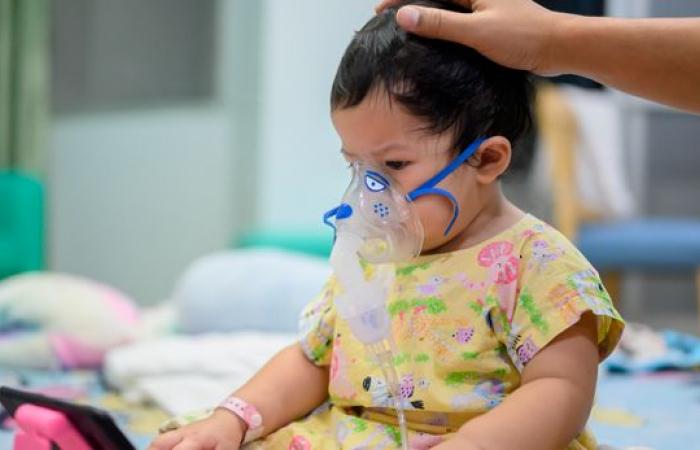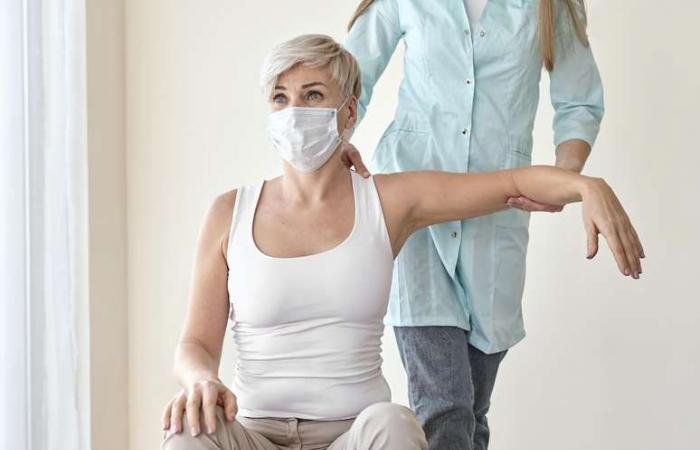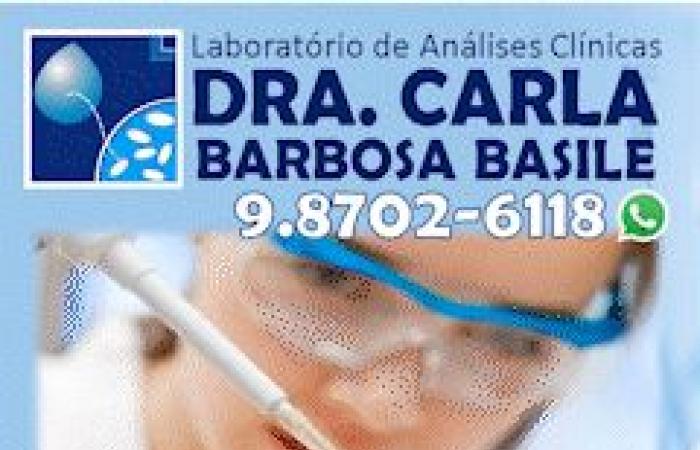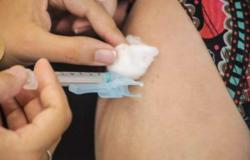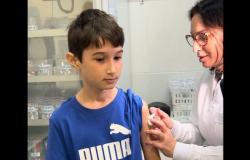RSV can affect people of all ages, but it is essential that adults aged 60 and over and with comorbidities are alert.
—— Article continues after advertisements ——

——
Respiratory Syncytial Virus (RSV) is often associated with babies and children, as it is related to bronchiolitis¹‚². The virus also deserves attention especially due to its impact on the elderly population, vulnerable to complications and serious respiratory infections.
—— Article continues after advertisements ——


——
“In the elderly population, the main risks to the body are damage to the respiratory tract, such as pneumonia and/or exacerbation of chronic lung diseases, such as asthma and Chronic Obstructive Pulmonary Disease (COPD), in addition to decompensation of heart failure and diabetes. “, explains Dr. Lessandra Michelin (CRM 23494-RS), infectious disease specialist and manager at GSK, a multinational biopharmaceutical company present in more than 80 countries.
—— Article continues after advertisements ——


——
According to the infectious disease specialist, the vulnerability of people over 60 years of age is due to the natural weakening of the immune system, which is unable to adequately combat infections. “Babies and the elderly are more likely to develop serious conditions caused by RSV and require hospitalization, as are immunocompromised patients.(…)
—— Article continues after advertisements ——


——
(…) At the extremes of the age group, immunity is different. Elderly people are in the period of immunosenescence, in which there is a decrease in the number and quantity of defense cells. Thus, they become more susceptible to more frequent infectious conditions”, adds the specialist.
—— Article continues after advertisements ——


——
“RSV infections are recognized as one of the main causes of hospitalizations and deaths in young children and the elderly”, adds Dr Tânia Chaves (CRM 72849-SP), infectious disease doctor, consultant for the Brazilian Society of Infectious Diseases (SBI) and who currently develops a post-doctorate on RSV in adults.
—— Article continues after advertisements ——


——
What is RSV?
The Respiratory Syncytial Virus presents symptoms similar to those of a cold, such as fever, headaches, runny nose, tiredness, sore throat, congestion and cough.

—— Article continues after advertisements ——


——
Dr. Tânia Chaves explains further: “In the elderly, the clinical symptoms of RSV infection can be very similar to those of Influenza virus infection, for example, with the exception of fever, potentially lower or absent. Transmission occurs through direct or close contact with contaminated secretions, such as droplets.”
—— Article continues after advertisements ——

——
The RSV condition can last up to two weeks, and symptoms can evolve quickly in elderly and immunocompromised people¹‚⁴‚⁵: “On average, the disease lasts from 5 to 14 days. Transmission occurs from 3 to 8 days, but immunocompromised individuals can transmit for up to 14 days. Symptoms can progress with shortness of breath, difficulty breathing and wheezing”, analyzes Dr. Lessandra Michelin.
—— Article continues after advertisements ——


——
RSV and comorbidities
RSV infection can make life difficult for adults who are already dealing with other health problems, even if the individual is younger.³‚⁶‚⁷ People living with conditions such as Chronic Obstructive Pulmonary Disease (COPD), asthma, diabetes and heart failure are more susceptible to more severe types of the disease, and are at greater risk of hospitalization.
—— Article continues after advertisements ——

——
“Over the years, as we get older, our immune system normally weakens and, as a result, has more difficulty fighting infections. And, in adults and elderly people who have comorbidities, this risk is even greater. Studies show that RSV infection can be a significant cause of COPD and asthma exacerbations.(…)
—— Article continues after advertisements ——


——
(…) Elderly people with COPD may be up to 13 times more likely to be hospitalized due to RSV complications. People with asthma can be up to 3.6 times more likely to be hospitalized, and those with diabetes can be up to 6.4 times more likely. For elderly people with congestive heart failure, the disease can also be worrying: they are up to 7.6 times more likely to be hospitalized”⁶‚⁸, explains Dr. Lessandra Michelin.
—— Article continues after advertisements ——

——
Changes post-Covid-19 pandemic
Post-pandemic, experts interviewed point to a change in the contagion pattern.
—— Article continues after advertisements ——


——
“What we know is that, after the pandemic, there was an increase in RSV circulation in all age groups. It lost that seasonality and began to circulate more intensely throughout the world. With isolation during the pandemic period, there is a reduction in the number of people who have antibodies developed from exposure to RSV, especially in relation to children, who are the main transmitters.(…)
—— Article continues after advertisements ——

——
(…) Children become infected and transmit it at home to adults, including parents and grandparents”, analyzes Dr. Alberto Chebabo (CRM 477743-RJ), Medical Director of the Clementino Fraga Filho University Hospital/UFRJ and President of the Brazilian Society of Infectious Diseases from 2022 to 2025.
—— Article continues after advertisements ——


——
For Chebabo, another important issue is that the pandemic has brought greater accessibility to molecular biology tests, facilitating the accurate diagnosis of RSV.
—— Article continues after advertisements ——

——
“Today, we are starting to diagnose what we used to call viruses. What was a virus for which we previously didn’t know the etiological agent, today we give it a name: it’s Covid, it’s Influenza, it’s RSV, it’s Adenovirus… This way, we have a better idea of the distribution of these viruses and see that RSV plays an important role in terms of infection.”
—— Article continues after advertisements ——


——
Contagion
RSV can be transmitted through the air, by touch and through contaminated objects, and can remain on certain surfaces.
—— Article continues after advertisements ——

——
“The virus can remain viable on contaminated hands for more than half an hour, and for a few hours on the surface of contaminated objects, depending on the type of surface and the temperature and humidity of the environment.(…)
—— Article continues after advertisements ——


——
(…) Infected children and immunocompromised people excrete viruses for long periods, increasing the risk of transmission, especially in health services and long-term care institutions.”, warns Dr. Tânia do Socorro Souza Chaves.
—— Article continues after advertisements ——


——
In addition to the high rate of contagion, another important factor is that there is no specific treatment for adults and elderly people with RSV, as explained by Dr. Alberto Chebabo.
—— Article continues after advertisements ——

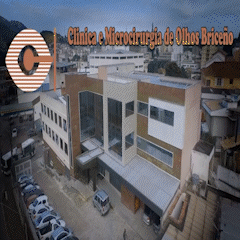
——
“This is a virus that has grown in terms of importance and number of infections in the population over 60 years of age, and we do not have a specific antiviral treatment aimed at this population.”
—— Article continues after advertisements ——

——
How to prevent:
RSV does not have a specific treatment and has a high transmission potential. Prevention is achieved through precautions such as washing hands, keeping environments clean and ventilated, and using a disposable tissue when coughing or sneezing.
In addition to these measures, in some countries, prevention is now possible through vaccination indicated for adults aged 60 or over.
Some information: Jornal Terra
——
Type in Google: Cerqueiras News
Join our Whatsapp Group and receive the news first hand (click on the link below):
https://chat.whatsapp.com/DwzFOMTAFWhBm2FuHzENue
Follow our social networks.
-

